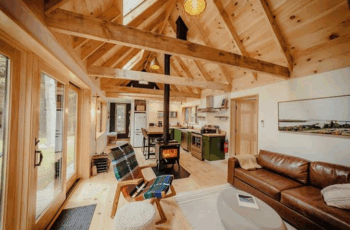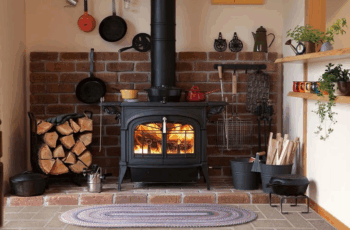
Living in a cabin often conjures images of peaceful mornings, fresh air, and a cozy, simple lifestyle. But the reality of cabin living, especially when the space is limited, can get overwhelming if clutter and unnecessary belongings start piling up. Minimalism isn’t just a trendy concept; it’s a practical approach that fits perfectly with cabin life. It’s about paring down to what really matters and creating a living environment that supports a calm, focused, and fulfilling life.
When you embrace minimalist living in a cabin, you start by reducing physical possessions. This isn’t about giving up everything you love but about keeping only what adds real value. Minimalism invites you to live intentionally, making space for experiences, nature, and personal growth instead of stuff. It’s a way to reduce distractions, cut down on maintenance, and foster a deeper connection with your surroundings.
One of the first benefits you’ll notice is how much calmer your space feels. When a room is cluttered, even if you don’t realize it, your mind tends to feel cluttered too. A clean, simple environment can ease stress and help you relax. It’s easier to focus on reading a book, cooking a meal, or just sitting quietly outside when you aren’t surrounded by chaos. This mental clarity that minimalism brings is one of its most rewarding aspects.
Living minimally also means less time spent cleaning and organizing. A cabin can quickly become overwhelming if you have too many things to take care of. With fewer belongings, cleaning becomes faster and less frustrating, giving you more time to enjoy your cabin rather than managing it. You might find yourself spending mornings on the porch instead of chasing dust bunnies or hunting for lost items.
Another key aspect of minimalist cabin living is the environmental benefit. Cabins are often situated in beautiful natural settings, and it makes sense to protect those surroundings. By owning less, buying less, and focusing on quality over quantity, you reduce waste and your ecological footprint. Minimalism encourages sustainable living practices that help preserve the very nature you’re enjoying.
Living minimally in a cabin can bring up some challenges, though. Adjusting to less space means you need to think creatively about storage and organization. Multipurpose furniture like a bench with storage inside or foldable tables can help. Using vertical space with shelves and hooks can keep the floor open and the cabin feeling larger. Regularly assessing your belongings helps prevent clutter from creeping back in, ensuring your cabin remains a peaceful retreat.
Emotional attachments to items can make decluttering difficult. It’s normal to feel a tug when considering parting with things that hold memories or sentimental value. Taking it slow helps — you don’t have to clear everything out at once. Sometimes taking photos of items before letting them go can preserve memories without keeping the physical clutter. Writing down why something is meaningful or sharing stories about it with family can also ease the process.
Keeping a small space tidy takes consistent effort. It’s helpful to build habits like putting things away immediately after use and spending just a few minutes daily tidying. Using baskets, bins, and organizers can keep small items neat and easy to find. A clutter-free cabin feels welcoming and safe, which adds to your overall peace of mind.

Minimalism also shifts your mindset. It’s easy to measure success by possessions, but in minimalist living, value comes from experiences, relationships, and personal growth. Many people who live minimally find that they appreciate moments more deeply — a sunset, a conversation, a quiet walk — because they aren’t distracted by material things.
One of the most beautiful parts of minimalism in a cabin is how it opens the door to a closer relationship with nature. Without excess stuff demanding attention, you naturally spend more time outside. The simple joy of watching wildlife, listening to the wind through the trees, or feeling the sun on your skin becomes more vivid. Minimalism helps blend indoor and outdoor living, often encouraging you to keep windows open or design the space to invite nature in.
You don’t have to be perfect to enjoy minimalism. It’s a gradual journey, and everyone’s version looks different. Some days you’ll hold onto something “just in case,” and that’s okay. The point is to be mindful of what you bring into your space and how it serves your life. Over time, you’ll likely find that less really is more.
Starting minimalist living in your cabin can be as simple as choosing one drawer or shelf to declutter. Set a timer for fifteen minutes and see what you can clear out. Donate, recycle, or repurpose items you don’t need. Notice how the space feels afterward. Doing this regularly builds momentum and changes your habits without feeling overwhelming.
Minimalism also encourages creativity. With fewer distractions, you can focus on hobbies, crafts, or simply being present. You might find joy in arranging a small flower vase, building a bird feeder, or journaling your thoughts by the window. The calm of your space can spark inspiration and new ideas.
At times, you might feel a pull to collect more stuff, especially if you’re used to a busy, consumer-driven lifestyle. That’s a natural feeling. Minimalism isn’t about deprivation; it’s about choosing intentionally. Sometimes it’s about saying yes to a meaningful item and no to things that don’t add value. Reflecting on your purchases before buying helps keep this balance.
Social connections are important too. Even though cabin living can be quiet and solitary, sharing your minimalist journey with friends or local communities can provide support and fresh perspectives. Participating in local events, trading items, or volunteering can enrich your life and keep things balanced.
There’s also a practical side to minimalism. With fewer belongings, moving or traveling becomes easier. If you rent out your cabin occasionally, a simple, clean space appeals more to guests. Minimalist cabins often feel more welcoming and easier to maintain, which adds to their charm.
Sometimes, people worry that minimalism means boring or plain spaces. On the contrary, a minimalist cabin can be warm and inviting. It’s about choosing pieces that speak to you and arranging them thoughtfully. Natural textures like wood, stone, and textiles add comfort without clutter. Plants bring life and color without overwhelming the space.
Minimalism invites you to slow down. Instead of rushing through activities surrounded by distractions, you savor moments. Making a cup of tea, reading a favorite book, or sitting quietly to watch the stars become meaningful rituals. This rhythm can transform how you feel about your cabin and life in general.
Of course, minimalism looks different for everyone. Some keep a few sentimental items, others only the bare essentials. The key is living in a way that feels right for you while appreciating the benefits of simplicity.
If you’re ready to dive deeper, you might explore minimalist design ideas for cabins. Simple color palettes, open shelving, and natural light create spaces that feel airy and calm. Using handcrafted or locally sourced materials supports sustainability and adds character.
Minimalist cabin living isn’t about making life harder. It’s about freeing yourself from unnecessary burdens. When your environment supports peace and function, your mind and spirit follow. You might find yourself feeling lighter, more energized, and connected.
In the end, the goal is to create a cabin that’s a true refuge — a place where you can unwind, recharge, and enjoy life’s simple pleasures. Minimalism is a tool to help get you there, making room for what matters most.
So start small, be patient with yourself, and enjoy the journey. Your cabin, your space, your life — simplified and filled with meaning.


